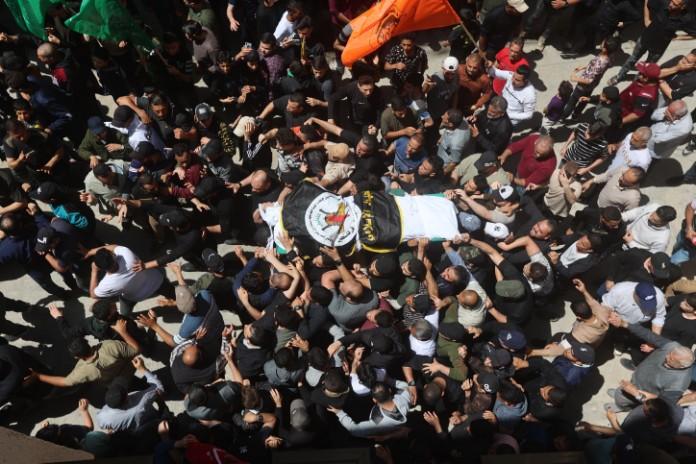
How the Gaza Ceasefire Unfolded With Iran’s Consent
The breakthrough for Saturday night’s Egyptian-brokered ceasefire between Israel and Gaza came as a result of a conversation between Palestinian Islamic Jihad’s top leader and Iran’s Foreign Minister.
The Tazpit Press Service has learned that Islamic Jihad Secretary General Ziyad al-Nakhalah presented a grim picture of the situation on the ground to Iranian Foreign Minister Hossein Amir-Abdollahian on Friday.
By then, Israel had killed five of the organization’s leaders, completely breaking the terror group’s chain of command.
Command was transferred to Islamic Jihad leaders in Syria and Lebanon.
“During the conversation, it was agreed between the Iranian foreign minister and the leader of Jihad that the latter would make the decision whether to turn to escalation or an agreement with the Egyptian channel, depending on the situation of the forces on the ground,” Arab sources told TPS.
Islamic Jihad understood that Hamas had made a final decision not to join the conflict. “For 24 hours, from the moment of the Israeli opening blow, Hamas examined the situation until the decision was made not to join the conflict,” an official from the Gaza Strip told TPS.
In the previous two conflicts between Israel and Islamic Jihad, Hamas also stayed on the sidelines.
“Nakhalah, who realized that Hamas was betraying him for the third time, still hoped on Friday to receive assistance from Hezbollah from the north, but that too was not on the horizon. The final decision to conclude terms with Egypt weighed on his heart,” an Arab source explained to TPS, burying hopes that Islamic Jihad might get last-minute support from Iran’s Jerusalem axis of proxies based in Syria and Lebanon.
The freedom of action Iran gave Nakhalah to move towards a ceasefire is not surprising. An IDF official told TPS that although Iran has been financing Islamic Jihad and helping it build power, Tehran is not necessarily pulling the strings on the Gaza terror group’s decision making.
Islamic Jihad also came under extremely heavy pressure from Hamas, Egypt and Qatar, forcing it to fold on its two most basic preconditions for a ceasefire: an end to Israel’s targeted measures against its leadership and the return the body of Khader Adnan, who died in prison during a hunger strike. Israeli sources tell TPS that no such commitments were made.
Israeli strikes on Islamic Jihad leaders came against the backdrop of a rocket barrage fired by the terror group following Adnan’s death on May 2. The terror group had threatened throughout Adnan’s hunger strike that it would hold Israel responsible for its member’s death.
Israeli sources added that no other concessions were offered. Arab reports suggested that Israel was prepared to change the route of the Jerusalem Day flag march, which takes place on Thursday.
The flag march is an annual highlight of Jerusalem Day festivities, which celebrate the anniversary of the Israeli capital’s reunification during the Six-Day War of 1967. Thousands of Israeli youths carrying Israeli flags march through Jerusalem’s Old City.
PA Arabs regularly accuse Israel of using the march to “Judaize” the city.
Israel reportedly warned Hamas in recent days that it would retaliate powerfully to any rocket fire during Jerusalem Day.
Before Jerusalem Day in 2021, Prime Minister Benjamin Netanyahu agreed to change the route so that marchers would not pass through the Old City’s Muslim Quarter, but Hamas fired rockets anyway, sparking an 11-day military operation in Gaza.
Source: jewishpress





